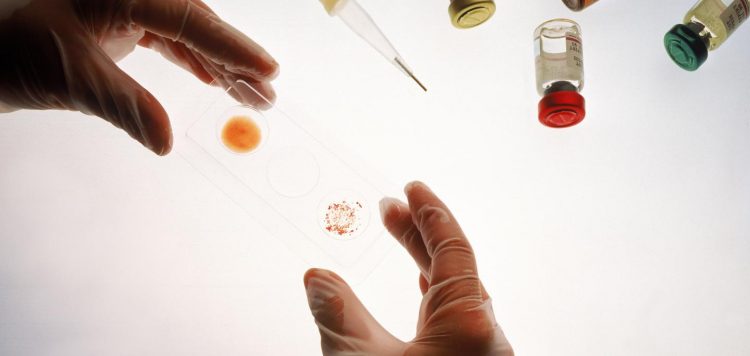When people think of how vaccines are created, their thoughts rarely turn to mathematics or finances. However, based on research conducted by a microbiologist at Iowa State University, those two areas may in fact hold the keys to success. Due to the findings of scientist Hillel Haim, the unique combination of particle diffusion in liquids and the prediction of stock prices just might result in a better HIV vaccine. If this sounds like an unusual way to create a healthcare vaccine, read on to find out the new and innovative ways in which this math can add up to a better HIV vaccine.
The Role of HIV Surface Proteins
According to the World Health Organization, over 35 million people have died of HIV since it was first discovered in the 1970’s. Due to the seriousness of the problem, scientists around the world have been conducting research on many levels in an effort to solve this complex health problem. However, since the virus is constantly changing, it can be difficult to create a vaccine that will accurately mimic the virus and attack it accordingly. To do so, scientists must learn how to deal with glycoprotein, which sits on the surface of HIV. Mutating on a frequent basis, it has played a significant role in keeping previous vaccines from being effective.
Predicting Protein Changes
Because of the complexity involved in understanding the role of surface proteins, researchers have turned to new methods in an effort to more accurately predict protein changes. This involves using computational tools based on specific mathematical principles, many of which have been used by financial professionals in an effort to accurately predict changes in stock prices. Studying the envelope glycoprotein, microbiologists at Iowa State University have been able to better understand how this protein circulates through a patient population and thus gain greater accuracy at predicting certain changes.

Analyzing Envelope Glycoproteins
Once microbiologists became aware of more ways in which these proteins changed and interacted within a patient’s body, they were able to develop more accurate ways to analyze the proteins. But in order to do this, researchers needed to collect samples of these proteins from a large patient population, which would enable them to collect blood samples and analyze the proteins. To accomplish this, analysis centered on examining changes in structural properties within the proteins. However, as researchers looked at current data, it began to remind them of how data collected from an Iowa City HIV clinic beginning in the 1980’s was very similar. By comparing the changes in structural properties, Haim and his colleagues realized these changes closely resembled the random diffusion of viruses through liquids, which Haim looked at as the basis of a previous graduate study research project.
HIV Evolution and the Stock Market
Strange as it may seem, there is a correlation between predicting HIV vaccine effectiveness by using the same methods associated with stock market prices. Using volatility and diffusion models used in many financial firms, HIV researchers realized that randomness does in fact have a defined and measured predictable structure that eventually shows how virus systems evolve. As a result, the diffusion-based model of predictability was eventually shown to describe and predict with high levels of reliability the evolution of HIV envelope glycoproteins.
The Future of Financial Math and HIV Vaccines
Due to the findings, researchers believe vaccines could eventually be customized to respond effectively to various and ever-changing forms of HIV. With an ability to be used for different populations around the world, microbiologists now have confidence they are on the path toward achieving even greater success with HIV vaccines.
Mark Sadaka from Vaccine Injury Help Center, the leading Vaccine Injury Attorney, has a national practice and works with clients from New York to Alaska.

